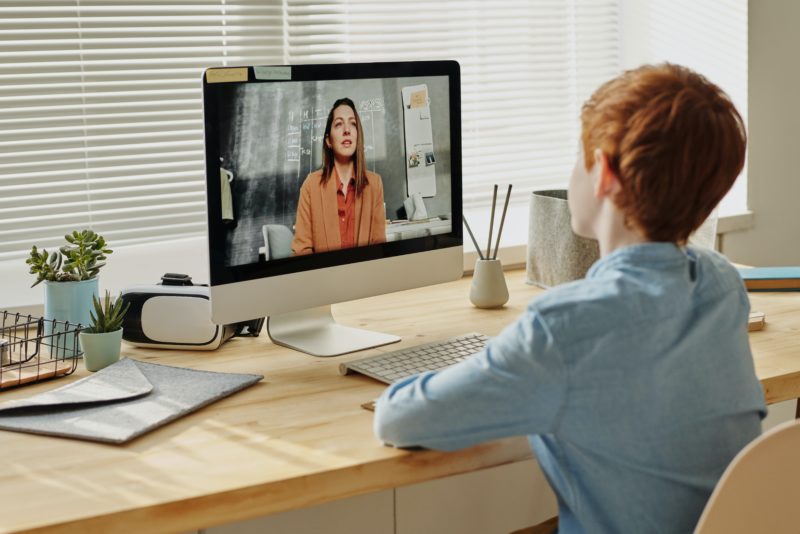Learning a language can be a rewarding yet challenging experience. For students with learning disabilities (LD), learning a language can be even more challenging – yet the payoff can be even more rewarding. As more research on LD becomes available, teachers are creating more solutions to ease language learning for students with LD.
This post will delve into how teachers can assist students with LD in learning a language.
How to Adapt the Classroom for Language Learning
1. Accommodate Specific Disabilities
Students of all abilities deserve learning environments that are inclusive and convey respect. When teaching learners with LD, remove any barriers to learner participation.
“Accommodations” are changes in the way the teacher presents tasks to enable students with LD to complete the same assignments as other learners. Accommodations don’t change the content of tasks nor give students with LD an unfair advantage.
The Individuals with Disabilities Education Act (IDEA) states that every student with LD and their parents/guardians should be part of an Individualized Education Program (IEP) team. Negotiating class teachers recommend that the IEP negotiates and decides what accommodation options are appropriate for the particular learner.
Encourage feedback and debate in class and through the IEP. You may even set discussions where the IEP team negotiates changes they would like to see.

2. Present a Structured Support Program
You can improve the comprehension of students with LD by presenting the class with a clear syllabus. Set the stage by telling your students what you expect from them in the classroom. Explain what the language goals are and which materials are essential.
According to a study by the Western Association for College Admission Counseling, more students than ever are overcoming their disabilities and pursuing higher education. This means that support services are now more than ever a necessity for inclusive classrooms. In particular, the study shows that learners with LD may require a higher level of support at the beginning of a language course.
Support your students for success by including step-by-step instructions to tasks, and show examples of quality work. Layout what the non-negotiable class rules are, such as raising a hand before you speak, to help learners with LD succeed as class members.
Include written instructions that are clearly visible so students are clear on, and can refer back to, how they can meet expectations.
3. Engage in Peer-Assisted Learning
Teachers can arrange learners in groups and pairs to learn from each other. Learning from peers can boost daily living skills as well as language skills, and paired learning is a great way of integrating students with LD with other students.
Peer-assisted learning promotes growth in:
- Academia
- Social skills
- Communication and negotiation skills
In peer-assisted learning, students with LD and students without LD learn from each other through three main turn-taking activities:
- Partner Reading: One partner reads aloud for five minutes while the other provides corrective feedback, such as when the reader mispronounces a word.
- Paragraph Shrinking: One partner reads what a passage is about, expressing the main ideas. The reader then provides a short narrative about the important events in the passage.
- Prediction Relay: The reader predicts what is likely to unfold on the next page. The reader then turns the page and reads aloud. Discuss with both students to decide whether the prediction was close. Students switch roles after each page.

4. Encourage Apps Use
In class and at home, smartphone apps can make a real difference for students with LD. Since different types of apps tackle different learning needs, teachers need to match the apps to each student’s needs.
A well-matched language app can assist with overcoming persistent difficulties. Apps provide individualized experiences that can increase a student’s desire to learn and ability to negotiate with others.
Some apps to consider for teaching languages include:
- Evernote – Make notes to connect ideas for better communication.
- OptiLingo – Regular, stress-free, and fun language practice for confident speech.
- Quizlet – Flashcard study sets for translations and pronunciation practice.
- MyTalkTools – Enables communication between family members and people with LDs, and conditions such as Parkinson’s or ALS.
- Dyslexia Toolbox – Assistive technology to overcome challenges such as slow note-taking.
- Voice Dream Reader – For students who respond better to aural learning. Best for students with ADD or ADHD and reading disabilities.
Helping Students with Disabilities Learn a Foreign Langauge
Often, students with learning disabilities face challenges when learning languages. Teachers can aid the language learning process by negotiating the right class accommodations with each student’s Individualized Education Program (IEP) team.
Some more techniques for students with LD to learn a language could involve peer-assisted learning and the use of smartphone apps. The IEP works together to recommend the best options for a particular learner. Remember, what works best for one student may not be as effective for another, even when they have the same LD.







